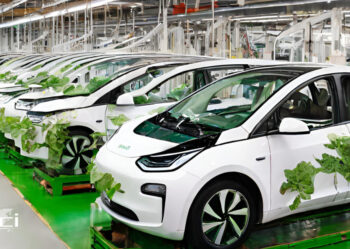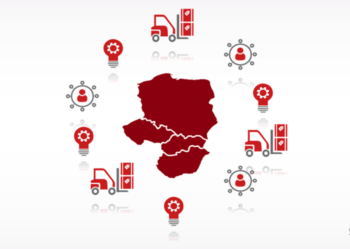The ambitions of the COP 26 are not unanimous

Global warming is a topic of increasing concern today because of the constant degradation of our planet. This is why leaders from more than 190 countries met again last October for COP 26. However, the outcome of this meeting was mixed – between progress and disappointment; companies are struggling to implement the various measures.
Back to COP : presentation
The COP is an international climate conference that brings together every year the signatory countries of the United Nations Framework Convention on Climate Change (UNFCCC).
Going back to the genesis of the COP, the first real concern or at least the first real serious collective interest in the planet came in 1972 with the Earth Summit in Stockholm. At that time, the choice of the Swedish capital was not insignificant, as Sweden was one of the first countries to set up a vast sustainable development policy programme in the 1960s (Sweden is now considered the “greenest” nation in the world, according to the Global Green Index Economy).
It was not until 1992 and the third Earth Summit in Rio that countries finally realised the importance of preserving the environment and insisting on sustainable development, which were considered essential for the future of mankind and the planet.
A total of 196 nations, including all the members of the European Community, will ratify the Framework Convention resulting from the Rio Earth Summit, which will involve meeting every year to maintain efforts related to environmental protection and sustainable development.
These major annual meetings are called “Conferences of Parties”, or COPs. The first conference, known as COP 1, took place in Berlin in 1995. Each year a new COP takes place, until the last one, the COP 26 in Glasgow last October.
The COP 26 of Glasgow :
This is the 26th Conference of the Parties. Since 1995, this summit has brought together every year the signatory states of the United Nations Framework Convention on Climate Change (UNFCCC). In 2021, COP 26 was held in the United Kingdom, in the city of Glasgow. It took place from 31 October to 12 November 2021 and hosted a wide range of actors such as government representatives, associations, activists, climate experts…
The aim of this conference is to combat global warming, as it commits all countries in the world to reducing their greenhouse gas emissions and keeping warming below 2°C by 2100.
It is also an opportunity each year to take a look at the progress and current results of the players concerned in terms of carbon impact and environmental performance.
Six years ago, the Paris Agreement set a target of limiting global warming to well below 2°C, preferably 1.5°C, compared to pre-industrial levels. However, despite the efforts made by some countries, COP 26 (also known as the “Glasgow Pact”) made it clear that this threshold is far from being reached.
COP26 and higher expectations
The COP 26 increases the pressure on countries by reminding them of the need to respect the commitments they made at previous climate conferences. It urges signatory members to make “rapid and profound” efforts and hopes that by 2030 GHGs (greenhouse gas emissions) will have been reduced by 45% compared to 2010 levels.
This is particularly ambitious given that transport produces 31% of GHGs, food processing 24%, industry 21% and construction 6%.
And in view of these ambitious expectations for a 45% reduction in GHGs, the signatory countries of COP 26 are invited to strengthen their objectives for 2030 in order to align themselves with the temperature objective of the Paris Agreement, which aims to limit global warming to 1.5°C, compared to pre-industrial levels.
Update on actions already implemented
Although the targets are ambitious, many changes have already taken place and have resulted in significant progress:
- Some 40 countries and institutions have committed to end the financing of fossil fuel projects abroad by 2022. This is a major step
forward as it is the first time that a text explicitly mentions fossil fuels, the main contributors to greenhouse gas emissions - More than 100 countries, which account for half of all methane emissions, have committed to reducing their emissions by 30% by 2030
- More than 100 states, representing more than 90% of the world’s forests, have committed to stop deforestation by 2030, with $12 billion in public funds committed. What we need to understand behind this is that entire business models will have to be reviewed
- India and Nigeria have committed to achieving net zero emissions by 2070 and 2060 respectively. India has also unveiled an ambitious plan to obtain half of its energy from renewable sources by 2030. This is a very big challenge for India, which wants to be a key player in preserving the environment by 2030 through the production of renewable energy.
- The risk of “double counting” has been eliminated: this means that both the buyer and the seller will no longer count the tonne of carbon. The basic principle was to allow states to buy emission reduction credits from other countries and use them to meet their national commitments. It should also be noted that this concept of double counting was the subject of much debate at COP 21, at the end of which no compromise was reached.
- More than 30 countries have stated their commitment to end sales of non-electric vehicles after 2035
- Launch of a clean energy coalition
While the conference made progress on some important issues, it also raised some important gaps that need to be addressed in the years to come.
COP 26, a big disappointment for many
– The 2°C threshold is not close to being reached
In the Paris agreements, countries gave themselves until COP26 to increase their ambitions to reduce greenhouse gases and thus reach the 2°C or even 1.5°C threshold.) However, in 2021, many countries have still not met the commitments they made in 2015.
In addition, before this conference, many countries updated their nationally determined contribution (NDC) plans, which describe their greenhouse gas emission reduction targets. If achieved, these plans would lead to global warming of around 2.7°C by the end of the century, well above the 2°C target agreed in Paris. Moreover, countries had previously agreed to review their NDCs every five years. Yet global warming is accelerating. This is why some believe that this timeframe is too long. They are therefore calling for more frequent reviews to encourage governments to increase their climate ambitions.
– Developing countries still struggling
Developing countries still face many challenges in reducing their environmental impact. Indeed, they are particularly affected by the harmful consequences of global warming, even though they are not among the largest emitters of greenhouse gases. This is why the developed countries had committed to providing them with financial aid of nearly 100 billion euros, but today, the figure is still not there.
UN Secretary General Antonio Guterres said the summit failed to deliver on key goals such as carbon pricing, ending fossil fuel subsidies and fulfilling a pledge to provide $100 billion a year in climate finance for developing countries.
Moreover, public funding from developed countries is not enough for all the actions needed to combat global warming. Some developing countries, such as Brazil, are hoping to gain financially from the sale of the certificates they have accumulated over the years by reducing their greenhouse gas emissions (these certificates were at the heart of the mechanism introduced in the Kyoto Protocol). But the problem is that prices have collapsed on the financial markets due to low demand. So there is no point in trying to sell these certificates at the moment. We will have to wait until demand increases again. The disappointment is even greater for developing countries, as developed countries insist that these certificates should be discontinued. Thus, this further accentuates the already existing tensions between these two ‘parties’.
– Still insufficient efforts by some countries
Not to mention the particularly polluting methane, which comes mainly from industrial livestock farming. Although some actors have committed to reducing their methane emissions, there are still countries that are heavily dependent on livestock farming that are reluctant to address this issue (such as Argentina and Canada).
China and India, among the world’s biggest carbon polluters, pushed at the conference to weaken a line on accelerating the phase-out of coal. A move that angered many countries already highly vulnerable to the consequences of global warming. Indeed, rather than a phase-out of coal, India and China called for a “gradual reduction in its use”.
In conclusion, it seems clear that COP 26 did not meet the expectations of the majority. There are still many gaps to be filled, which require much more than just negotiations between states. However, it would be unfair to ignore the progress that this conference has made, albeit limited. Indeed, some state actors have pledged to make efforts that they were previously reluctant to make. However, it remains unclear whether the commitments made by the different countries will be respected. We will have to wait and see how things evolve over time.
SNECI and the reduction of the carbon footprint.
With nearly 70 years of existence and industrial expertise throughout the world, at SNECI we support professionals in various sectors, whether in their green mobility or in 4.0 industrialisation.
Aware of the environmental, regulatory and CSR issues, our support is aimed at reducing the carbon footprint, managing waste and above all improving industrial performance in order to move towards more responsible production
At SNECI, we do not say that this is easy, we explain to our clients how to identify their environmental impact and then we accompany them in compensating for this impact in order to put in place mechanisms and processes that allow them to change the way they produce while maintaining high levels of profitability and growth.
Audit (ISO, IATF, ISA, on-site quality resident…), supply chain (purchasing and logistics thanks to our 40 warehouses), training (and tailor-made coaching), industrial project management (launches, transfers, optimisation…), thanks to our experts in process engineering and supplier development, we enable you to control the quality, cost and deadline aspects. As you can see, SNECI has an unlimited range of possibilities for supporting industrialists and their suppliers.
Automotive, health, rail, aeronautics, energy and luxury, more than 400 industrial companies in 50 countries trust us. If you too would like to be supported in your transition to responsible industrialisation and improve your industrial and commercial performance, then contact us!






